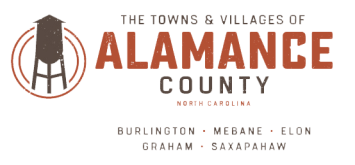Earlier history:
The Sissipahaw, a Native American tribe, first inhabited the southern area of what is now Alamance County.
In 1701, John Lawson, an English explorer, traveled this region and described the land as “extraordinarily rich” and that no man could have any reason to dislike it.
Germans settled on the western part of the county, in what is now Gibsonville, in the 1740’s, establishing a Lutheran church, cemetery and school.
In 1756, Scots-Irish settlers organized the first Presbyterian church in the area known as Hawfields, a community south of present day Mebane.
On May 16, 1771, a group of backcountry farmers called the Regulators, fought against Royal Governor William Tryon and the North Carolina militia. Although the Regulators were defeated, some of their frustrations carried over into the sparks of the American Revolution.
Alamance County was named after the Great Alamance Creek, which runs through the textile mill village of Alamance. In 1849, Alamance County was formed from Orange County.
The American Civil War also impacted our community with the first American soldiers in history to travel by railroad into combat as they rode trains to Manassas, Virginia the site of the first major battle of the war. Veterans of the Civil War engaged in building a dynamic textile industrial community, becoming a focal point of textile production in North Carolina and the Southeastern United States. Those stories are shared in the Textile Heritage Museum in Historic Glencoe.
During the mid-19th century, ten water powered textile mills were constructed along the Haw River, and Alamance County soon became a focal point of the textile industry in North Carolina with the creation of “Alamance Plaids” and other textile products. Burlington Industries, founded in November 1923, rose to becoming the largest textile manufacturer in the world employing more than 80,000 workers, and the village of Haw River became known as the “Corduroy Capital of the World”.
The heart of textiles in North Carolina lies within Alamance County.





